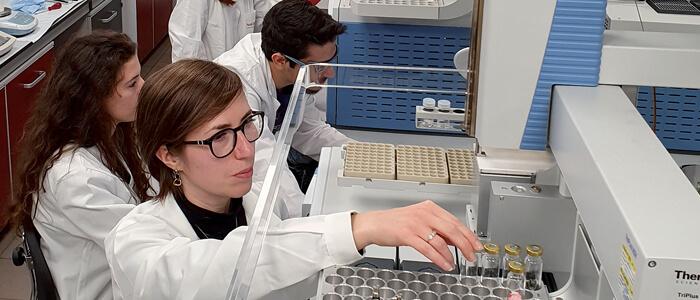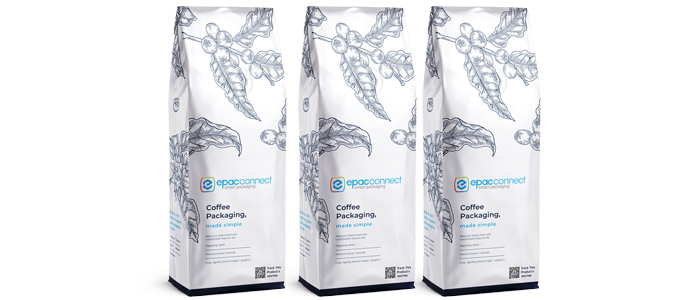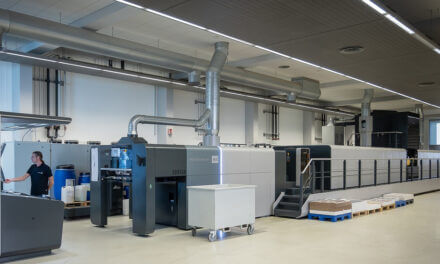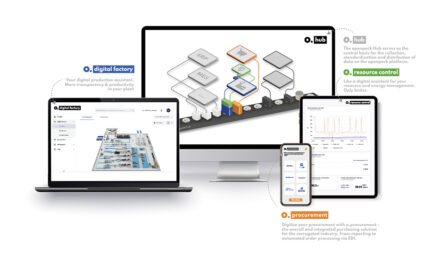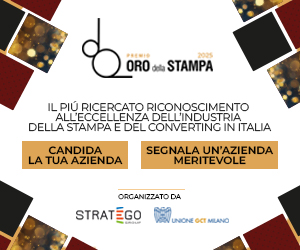How value is created (for customers, end users, the environment and even corporate R&D) with an analytical laboratory equipped with the most powerful technologies and managed by experienced staff. We find out by visiting the one recently inaugurated by Sun Chemical, with investments up to ISO 9001 quality certification, to create evermore performing products and offer the market Nias-proof guarantees.
Four main instruments (2 gas chromatographs, a GCMS and an IR spectrophotometer) with the necessary complements; a team of super specialized technicians (and more besides); very high quality objectives, testified by ISO 9001, ISO 14001 environmental, OHSAS 18001 and ISO 22000 food safety certifications of the Italian site (the only one possessing these certifications in Europe) … The renewed analytical laboratory inaugurated last September 13 by Sun Chemical Group SpA, during the event “Porte Aperte in Sun Chemical” presents itself as a “4-star” structure capable of conducting all types of chemical analysis, in support of the absolute safety guaranteed by the products of the ink multinational. But it was only when we went to visit it, guided by the staff, who manage the plant headed by Egidio Scotini, did we understand its scope and why Sun Chemical Italia has invested so many resources to restructure it and update its equipment.
Applied and chemical analysis for Quality (and customers)
Six laboratories operate in the two contiguous sites of Sun Chemical in Caleppio di Settala (MI) at the service of R&D, color development and quality control. They therefore carry out ink formulation and application-type tests, relating to the performance and characteristics of the products – for example print slipperiness or ink viscosity. All except the new recently renovated analytical laboratory, where the chemical instrumental analyses, that define the nature of a product, are carried out. It operates for all areas of activity – other laboratories, product safety departments and, of course, customer support. Here we call it ACL (Analytical Chemistry Laboratory), for short.
«A growing number of requests come from the market – explains Egidio Scotini – this due to the greater complexity of the products, the regulatory framework and, more generally, the culture of safety which, fortunately, is growing. The smaller printers, who only have the basic equipment for routine checks – such as solvent retention, for checking the parameters in the printing press – rely on us for the most sophisticated analyses, while the better equipped might need a check on unclear results, or on methodological doubts. Here we bring into play not only the best equipment, but also the ability to use it at its best». However “objective” the chemical analyses are, the expert underlines, certainties are not obtained by pressing a button and the difference is always made by the “human factor”, comprising methodological choices, knowing how to read and contextualize the data, the ability to calibrate and maintain instruments in optimal conditions … And this especially in the world of food packaging, where the factors to be kept under control are many.
Gas chromatographs at increasing levels of detail
A substantial part of ACL analysis based on gas chromatographs (GC) – explain Barbara and Annalisa – enable the solvent composition of liquid or printed substances to be established. The most used is that for liquids: Solvents, solvent mixtures, liquid inks etc. The sampling enables the automatic injection of the sample into the “chromatographic column” of fused silica where a gas separates its components which are then identified by the FID or Flame ionization detector. It is used classically for the analysis of impurities in the incoming solvents. The second GC is combined with an autosampler for headspace and also enables the analyses of the printed samples, first of all to measure that fundamental parameter which is the solvent retention, and is therefore also used to support customers who do not have adequate tools or need a check on the results and/or methods of a test.
The new laboratory is also equipped with a third type of gas chromatograph: the “gas mass” or GCMS – gas chromatograph with mass spectrometer. This instrument, equipped with both samplers for liquids and solids, operates with a different principle – explains Silvia – and performs more sophisticated analyses, capable of obtaining more specific and qualitative data on the compounds present in traces too small to be detected by the other instruments .
The substance is uniquely identified on the basis of the molecular weight: usually this analysis is carried out on raw materials or new products to check for the presence of Nias (“Not intentionally added substances”) and other elements which, beyond a certain specific migration limit (SML), could modify the composition or the organoleptic properties of packaged food.
The IR spectrophotometer identifies the unknown elements
The fourth and most recent of ACL’s purchases (just a few months ago) is a latest generation infrared spectrophotometer. While the other machines focus on the volatile part of a sample – a solvent, an additive … – the infrared lets one see the “solid”.
«The analysis of a material, for example a substrate (of paper, PP, PE or other) of which it records the infrared spectrum and compares it to the most similar one stored in the library, allowing its identification», explains Barbara. «Or, by analysing a sample of colored ink, it enables one to find the molecule that identifies the pigment. Or, in the case of mixtures (and all our products are mixtures of several elements) it allows us, for example, to understand the nature of a resin – whether nitrocellulose, or polyurethane … ». «In addition, an important part of the analysis that we have implemented – adds Annalisa – is that of the raw materials destined for DFC (direct food contact) products: we are not satisfied with examining what the supplier declares, the suitability of each lot is ascertained».
«Different tools can give the same result, but from two different points of view. And in analytical chemistry, confirmation is fundamental. We cannot place our faith in a single datum, just as a doctor’s diagnosis is based on comparison and interpretation of several data, each of which, considered per se, is not significant for a given pathology».
When it comes down to it, what does Quality mean?
The Sun Chemical chemical analysis laboratory works to identify components and/or pollutants of a substance, to protect the healthiness of the printed packaging and its contents, to guarantee the intrinsic quality of a product, (whose performances also depend on its purity, which must therefore be verified). It also focuses on operator and plant safety, paying attention to possible contamination between one production area and another. Not to mention attention to the environment, which demands the selection of raw materials and the production of compostable or recyclable products.
All of this can be summarized under the umbrella principle of safety – one of the pillars of Sun Chemical’s work, which the company interprets across-the-board as operator safety in the workplace (regulated by ISO 18001), environmental safety (certified by ISO 14001) and food safety (ISO 22000). As Egidio Scotini underlines «ours is today the only Sun Chemical site in Europe, and one of the few in the world, to have all three certifications. Both for the acute sensitivity of the Italian branch for these issues and because we are among the few, of this size, to also produce varnishes for direct food and pharmaceutical products contact, and it is an extremely serious matter».

